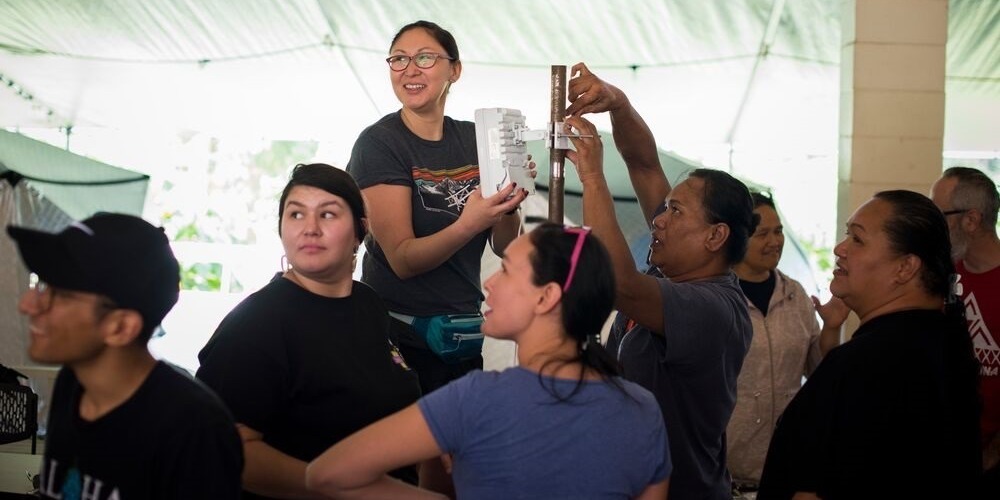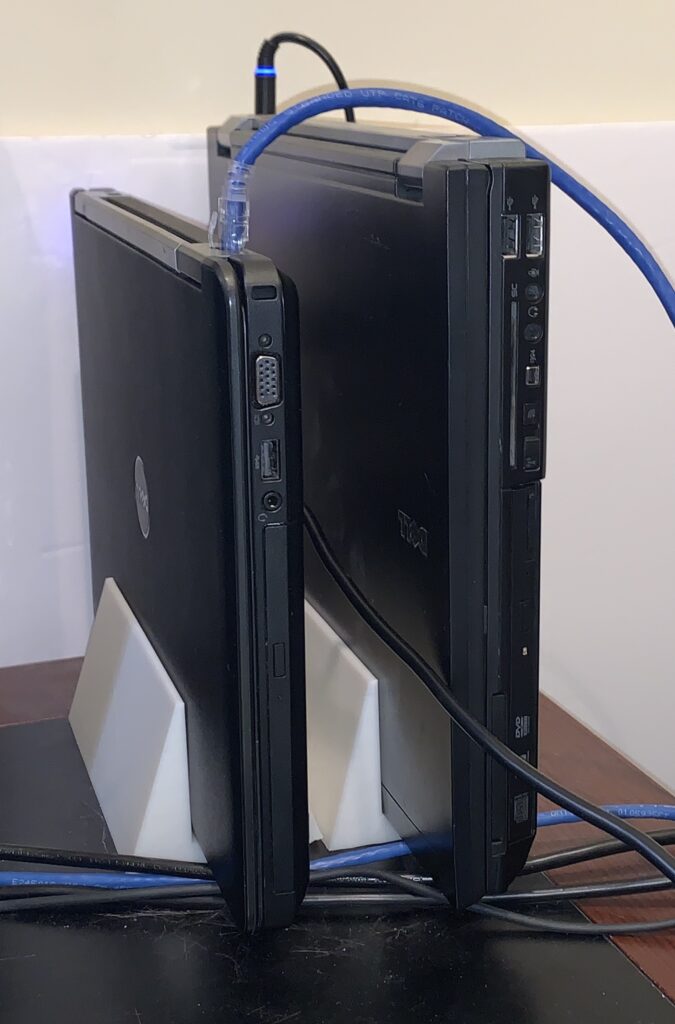A deep-dive into Cloudflare’s autonomous edge DDoS protection


Today, I’m excited to talk about our autonomous DDoS (Distributed Denial of Service) protection system. This system has been deployed globally to all of our 200+ data centers and actively protects all our customers against DDoS attacks across layers 3 to 7 (in the OSI model) without requiring any human intervention. As part of our unmetered DDoS protection commitment, we won’t charge a customer more just because they got hit by a DDoS.
Autonomous protection the edge
To protect our customers quickly and with precision against DDoS attacks, we built an autonomous edge detection and mitigation system that can make decisions on its own without seeking a centralized consensus. It is completely software-defined and runs on our edge on commodity servers. It’s powered by our denial of service daemon (dosd) which originally went live in mid-2019 for protection against L3/4 DDoS attacks. Since then, we’ve been investing in enhancing and improving its capabilities to stay ahead of attackers and to disrupt the economics of attacks. The latest set of improvements have expanded our edge mitigation component to protect against L7 attacks in addition to L3/4.
This system runs on every single server in all our edge Continue reading
The Teams Dashboard: The Design Story

Intro

Cloudflare for Teams was first announced in January 2020, along with our acquisition of S2 Systems. It was an exciting day for everyone at Cloudflare, but especially my team, who was in charge of building Teams.
Here is the story of how we took Cloudflare for Teams from initial concepts, to an MVP, to now a comprehensive security platform that secures networks, users, devices, and applications.
Background
When I joined Cloudflare in April 2019, I was excited to have an impact on helping to build a better Internet. I was fascinated by the intricacy of how the Internet works, and wanted to untangle that complexity to provide our users with the best in class experience, with a simple and concise design approach. Little did I know that I would have the opportunity to launch a product that would impact thousands during a time when people need the Internet the most.
We started conceptualizing what would eventually become Cloudflare for Teams in July 2019, with a big vision and a small team. Coming off the excitement of 1.1.1.1, the team began thinking about how to bring this functionality to small, medium, and enterprise businesses. Our Continue reading
New Guide to Federal Broadband Funding Opportunities in the U.S.

New resource will help communities find the right funding for their networks
At the 2020 Indigenous Connectivity Summit (ICS), participants asked the Internet Society to create a “centralized database that captures funding opportunities, eligibility, and information on how to apply.” There is currently no coordinated federal database where applicants can find all available funding sources. This is particularly challenging for those without Internet access – the intended benefactors of funding – as they are unable to surf the web to research all the different departments, commissions, and agencies that offer grants and loans related to Internet access.
Today, I am pleased to announce the launch of the Guide to Federal Broadband Opportunities in the U.S. By creating this consolidated resource, especially as large amounts of funding become available as a part of COVID-19 relief and Tribes begin utilizing their Educational Broadband Service spectrum, the Internet Society hopes to assist our community to access these vital funds.
Over the past three months, we have worked with our partners to create a comprehensive database of federal funding opportunities in the United States. These opportunities vary dramatically in size and include a variety of deployment and end-user scenarios. For example, Continue reading
Public Cloud Behind-the-Scenes Magic
One of my subscribers sent me this question after watching the networking part of Introduction to Cloud Computing webinar:
Does anyone know what secret networking magic the Cloud providers are doing deep in their fabrics which are not exposed to consumers of their services?
TL&DR: Of course not… and I’m guessing it would be pretty expensive if I knew and told you.
However, one can always guess based on what can be observed (see also: AWS networking 101, Azure networking 101).
Public Cloud Behind-the-Scenes Magic
One of my subscribers sent me this question after watching the networking part of Introduction to Cloud Computing webinar:
Does anyone know what secret networking magic the Cloud providers are doing deep in their fabrics which are not exposed to consumers of their services?
TL&DR: Of course not… and I’m guessing it would be pretty expensive if I knew and told you.
However, one can always guess based on what can be observed (see also: AWS networking 101, Azure networking 101).
VPN’s Days Are Numbered: Here Comes Zero-Trust Security
Despite providing generally fast and reliable remote security during the COVID-19 pandemic, VPN may soon be replaced by an even more resilient technology. Here's what you need to know about zero-trust security.Unifi controller with a real cert
I finally got sick of seeing a certificate error when connecting to my Ubuiquiti Unifi WiFi controller.
There are a bunch of shitty howtos describing how to install a cert, and one good one. But in order to make it more copy-paste for future me when the certificate needs renewing, and because the paths are not quite the same since I run the controller in a Docker container on a raspberry pi, here are the commands (after copying fullchain.pem and privkey.pem into the stateful data dir):
host$ docker ps # make note of the docker ID
host$ docker exec ID_HERE -ti bash
docker$ openssl pkcs12 \
-export \
-inkey privkey.pem \
-in fullchain.pem \
-out cert.p12 \
-name unifi \
-password pass:secret
docker$ keytool \
-importkeystore \
-deststorepass aircontrolenterprise \
-destkeypass aircontrolenterprise \
-destkeystore /usr/lib/unifi/data/keystore \
-srckeystore cert.p12 \
-srcstorepass secret \
-alias unifi \
-noprompt
docker$ exit
host$ docker stop ID_HERE
host$ docker start ID_HERE
I’m mostly happy with the Ubiquiti access points. I have an AP-AC-LR and an AP-M. My complaints are:
- When I reported a bug about access to SSH on non-management interfaces, they responded by turning off management over IPv6 Continue reading
Buying Used Cisco Gear From eBay For Your Lab
While most of the lab work I do is with virtualized networking gear, once in a while, I need actual hardware. For instance, to fully explore QoS, hardware is key. Many QoS commands won’t be available to you in a virtual network device.
eBay offers lots of older networking gear for pennies or even fractions of a penny of what the gear was worth new. Why so cheap? Mostly, older networking gear is too slow for modern LANs and WANs. That’s a win for learners who don’t care about the speed as long as they can still use the old box to learn the fundamentals of routing and switching.
There are caveats to eBay networking gear, though, not unlike buying a used car. Know what you’re getting into.
You’re buying someone else’s junk.
Why is it junk? It could be the gear aged out, but still works fine. It could be that the gear broke, but you’ll be able to fix it. It could be that the gear broke, and you won’t be able to fix it. Sometimes, folks who move out of a data center sell pallets of retired gear by weight to whoever will take it just because Continue reading
Transit delay and queueing
The recently finalized sFlow Transit Delay Structures extension provides visibility into the performance of packet forwarding in a switch or router using the industry standard sFlow protocol.
The diagram provides a logical representation of packet forwarding. A packet is received at an Ingress Port, the packet header is examined and a forwarding decision is made to add the packet to one of the queues associated with an Egress Port, finally the packet is removed from the queue and sent out the Egress Port to be received by the next device in the chain.
The time between sending and receiving a packet is the packet's transit delay. The transit delay is affected by the time it takes to make the forwarding decision and the time the packet spends in the queue. Identifying the specific queue selected and the number of bytes already in the queue fills out the set of performance metrics for the forwarding decision. The sFlow Transit Delay Structures extension adds these performance metrics to the metadata associated with each packet sample.
The following output from sflowtool shows that data contained in a packet sample:
startSample ----------------------
sampleType_tag 0:1
sampleType FLOWSAMPLE
sampleSequenceNo 91159
sourceId 0:2216
meanSkipCount Continue reading
The Hedge 75: Mike Parks and the Remote Work Scramble
The international pandemic has sent companies scrambling to support lots of new remote workers, which has meant changes in processes, application development, application deployment, connectivity, and even support. Mike Parks joins Eyvonne Sharp and Russ White to discuss these changes on this episode of the Hedge.
VNC Cannot Currently Show the Desktop
I have a Dell Latitude E5440 laptop which most of the time I run headless in a 3D-printed stand next to its slightly bigger brother, a Dell E6500 or similar.

The laptops don’t take up much space on my desk in this vertical configuration (which is helpful as I have four laptops on my desk) and I use VNC to remote into them when I need to work on a Windows system. My main system is an Apple MacBook Pro, and I have that in a similar vertical dock with two 27″ monitors, a bluetooth keyboard and touchpad, and a USB-C port expander/charger. By using VNC I can keep using the peripherals I like and quickly switch between systems while sharing copy/paste buffers as well, which is pretty much perfect.
There’s one nagging little problem though, that I can’t get around. When I access the E5440 using RealVNC, it is slow to show the screen when initially connecting and every time there is a Windows UAC prompt I have to wait about five seconds or so while staring at a black screen which says “Cannot currently show the desktop”.

This is somewhat annoying and after digging around a bit I Continue reading
Trends in Data Center Networking: Past to Future
Data center networking has evolved substantially over the past two decades, driven by the move to virtualized applications and cloud...
The post Trends in Data Center Networking: Past to Future appeared first on Pluribus Networks.
Libraries Are Bridging the Digital Divide

Libraries and Community Networks are teaming up and discovering new ways to connect the unconnected
When the COVID-19 pandemic hit in early 2020, libraries across the world shut down their buildings to limit transmission of the virus. What did not shut down were the crucial services they provided. Instead, librarians stepped up and zeroed in on their passion to serve the public, acting as first responders and amplifying their steadfast commitment to ensure people have access to public information.
A year into this pandemic, Internet access is crucial. So many people need to be online for everything from school and work to getting updates about vaccinations. But lifesaving lockdown measures are presenting challenges to the ways many of us have been able to access the Internet in public spaces.
As COVID-19 exacerbates issues associated with lack of Internet access, libraries are playing even more of a key role in getting local communities online. This has happened in multiple creative ways, from turning bookmobile vans into roaming hot spots delivering Wi-Fi throughout the community, to extending library Wi-Fi access into the parking lot and beyond.
Libraries have a long history of working closely with community networks to provide affordable Internet access Continue reading
Honeypods: Applying a Traditional Blue Team Technique to Kubernetes
The use of honeypots in an IT network is a well-known technique to detect bad actors within your network and gain insight into what they are doing. By exposing simulated or intentionally vulnerable applications in your network and monitoring for access, they act as a canary to notify the blue team of the intrusion and stall the attacker’s progress from reaching actual sensitive applications and data. Once the blue team is aware of the situation, the attack can be traced back to the initial vector. The attack can then be contained and removed from the network.
Applying this technique into a Kubernetes environment works exceedingly well because of the declarative nature of applying manifests to deploy workloads. Whether the cluster is standalone or part of a complex pipeline, workload communications are defined by the application’s code. Any communication that’s not defined can be deemed suspicious at minimum and indicate that the source resource may have been compromised. By introducing fake workloads and services around production workloads, when a workload is compromised, the attacker cannot differentiate between other real and fake workloads. The asymmetric knowledge between the attacker and the cluster operator makes it easy to detect lateral movements from compromised Continue reading
Day Two Cloud 089: Connect All The Cloud Things – AWS Networking In 2021
Network engineer and AWS product manager Nick Matthews visits the Day Two Cloud podcast to talk about the newest cloud networking capabilities in AWS. We also discuss common design mistakes, what's happening with IPv6, SD-WAN and cloud, and more.Day Two Cloud 089: Connect All The Cloud Things – AWS Networking In 2021
Network engineer and AWS product manager Nick Matthews visits the Day Two Cloud podcast to talk about the newest cloud networking capabilities in AWS. We also discuss common design mistakes, what's happening with IPv6, SD-WAN and cloud, and more.
The post Day Two Cloud 089: Connect All The Cloud Things – AWS Networking In 2021 appeared first on Packet Pushers.
